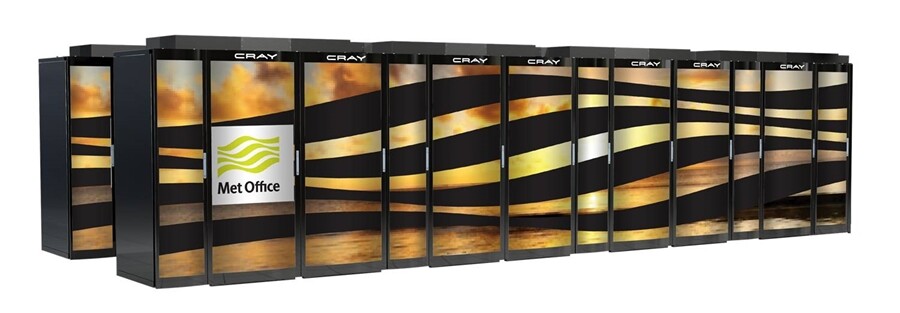The UK's obsession with the weather has just been stepped up a gear. The Met Office has announced that it will begin using a new supercomputer enabling highly detailed forecasts. The Cray XC40TM will cost £97 million (US$156 million) and is aimed at making the UK a world leader in weather and climate science.
The Met Office is the UK's public weather and climate research agency. The data it produces is made available for use by other organizations and has previously been employed for showing temperature records in Google Earth and and by Micasa Lab's indoor cloud-making machine. This most recent investment will help to improve the volume and accuracy of the data produced.
The Cray XC40TM is one of the fastest supercomputers in the world. It has 480,000 cores, 2 million gigabytes of memory and can store up to 17 million gigabytes of data. At its peak, it is able to make 16,000 trillion calculations per second.

The system is a significant upgrade from the current IBM Power 775, which has a memory of 80,000 gigabytes, can store up to 2 million gigabytes and can make 1,200 trillion calculations per second.
The computer will enable hourly forecasting with a much higher level of weather detail for precise geographic areas and the ability to create much higher resolution weather modeling for localized areas. The Met Office says that that it will be possible to create models for areas down to a resolution of 300 m (984 ft), allowing it to effectively predict differences in weather conditions between city blocks or even individual streets. It will also be possible to better predict weather over longer periods, allowing for better preparation against developing climate trends such as flooding, droughts and heatwaves.
According to the Met Office, this could lead to £2 billion of socio-economic benefits to the UK, allowing airports to operate at a greater level of efficiency, properties to be better protected from flooding and winter infrastructure to be better planned. Planning for renewable energy infrastructure and climate change research will also benefit.
The Cray XC40TM will be located partly at the Met Office HQ in Exeter and partly at a purpose-designed building at the nearby Exeter Science Park (pending planning permission). It will become semi-operational in September 2015 and will reach full capacity in 2017.
Source: Met Office





